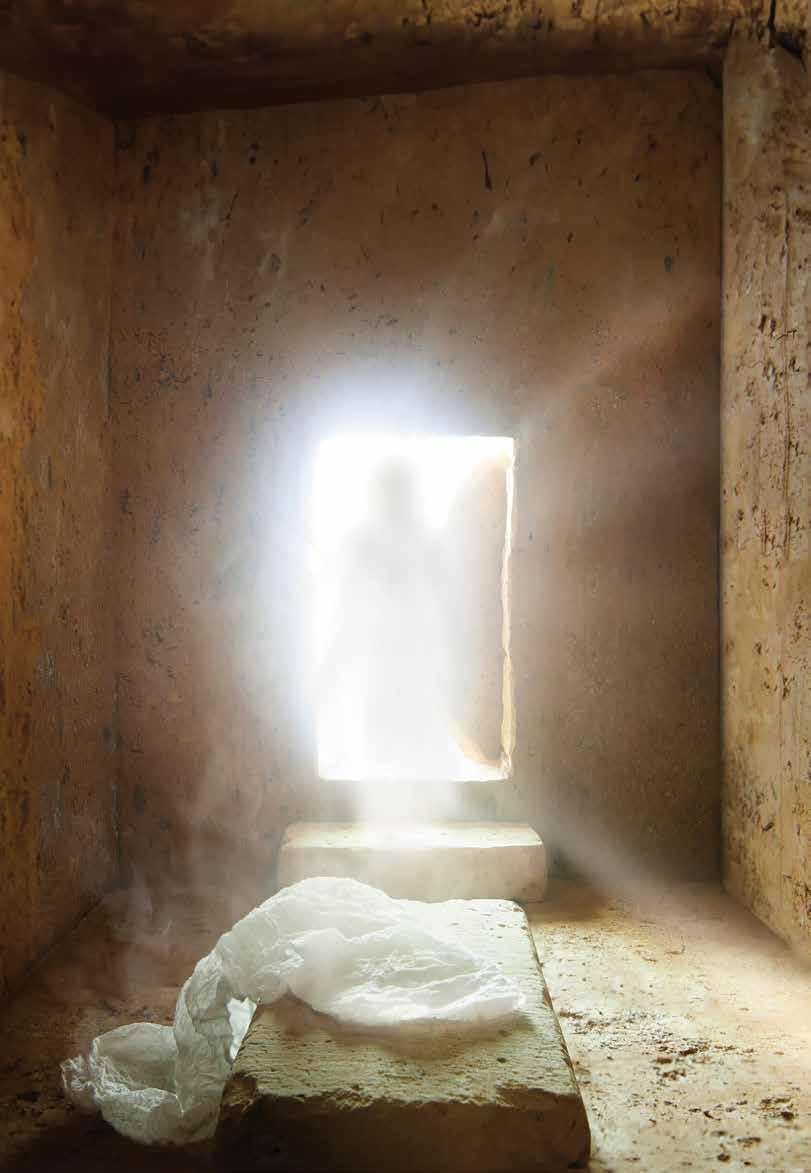


Author investigates the original doubting Thomas












Author investigates the original doubting Thomas













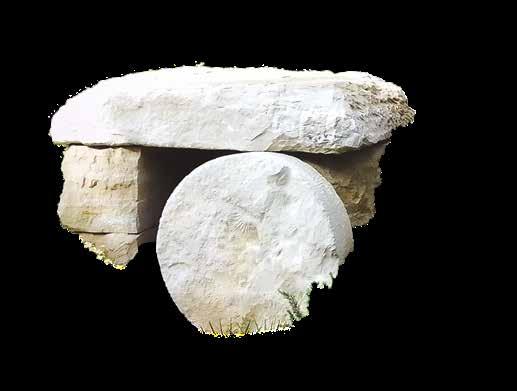




Garden displays the good news of Easter
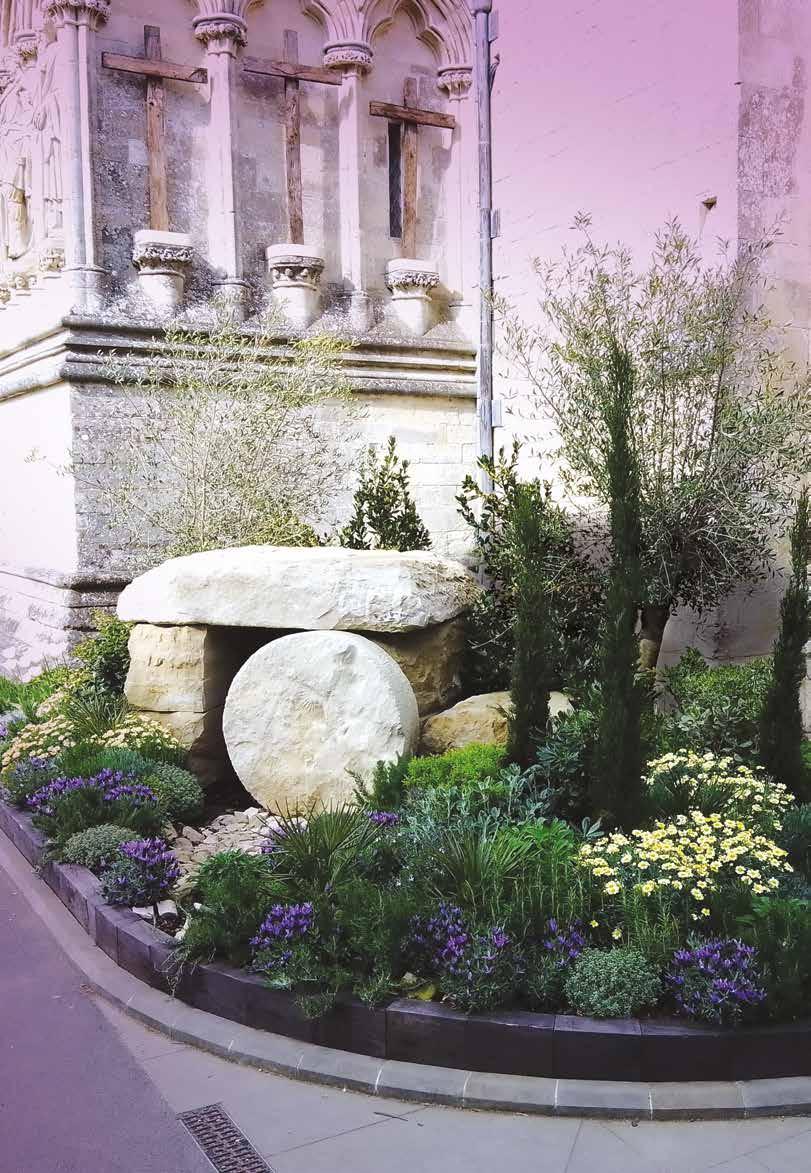
‘I’m sure I saw God on pilgrimage’
The Salvation Army is a Christian church and registered charity seeking to share the good news of Jesus and nurture committed followers of him. We also serve people without discrimination, care for creation and seek justice and reconciliation. We offer practical support and services in more than 700 centres throughout the UK. Go to salvationarmy.org.uk/find-a-church to find your nearest centre.
The Salvation Army first published a newspaper called the War Cry in London in December 1879, and we have continued to appear every week since then. Our name refers to our battle for people’s hearts and souls as we promote the positive impact of the Christian faith and The Salvation Army’s fight for greater social justice.

Editor: Andrew Stone, Major
Deputy Editor: Philip Halcrow
Production Editor: Ivan Radford
Assistant Editor: Sarah Olowofoyeku
Staff Writer: Emily Bright
Staff Writer: Claire Brine
Editorial Assistant: Linda McTurk
Graphic Designer: Rodney Kingston
Graphic Designer: Mark Knight
Email: warcry@salvationarmy.org.uk
The Salvation Army United Kingdom and Ireland Territory 1 Champion Park London
SE5 8FJ
Tel: 0845 634 0101
Subscriptions: 01933 445445 (option 1, option 1) or email: subscriptions@satcol.org
Founder: William Booth
General: Lyndon Buckingham
Territorial leaders: Commissioners Jenine and Paul Main
Editor-in-Chief: Major Julian Watchorn

Your local Salvation Army centre
CHOCOLATE eggs, hot cross buns and a long four-day bank holiday weekend. Take your pick, there is plenty to look forward to over the coming days.
Plus, after the drab (and, in some areas, exceptionally wet) days at the beginning of the year, the natural world is now waking up and springing into life in an array of colour and scents. That’s something that Salisbury Cathedral is highlighting with its Easter garden.
However, as we report in this week’s War Cry, the garden is more than just a celebration of the changing of the seasons. It is also a reminder to visitors of the reason we get to enjoy good things at this time of year.
The garden tells the story of the death and resurrection of Jesus that took place almost two thousand years ago. It’s a story that can seem very old and irrelevant to the world today. But the reality is, that couldn’t be further from the truth.
Because the first followers of Jesus encountered him alive and well after he had died on a cross, their lives changed for ever. They actively took the good news of God’s love – the news that Jesus had given them – all over the globe and things were never the same again.
Even today, Christians are making a significant difference for good in the communities in which they live. They are at the heart of many initiatives that are feeding hungry people, providing shelter for those who are experiencing homelessness, and working with others to find purpose and fulfilment within their own lives.
If we enjoy the chocolates, buns and time off work, we are following years of tradition in celebrating the good news that, because of the sacrifice Jesus made, we can enjoy a personal relationship with a loving Heavenly Father who cares for each one of us.
This Easter, we have the chance not just to enjoy the traditions, but to experience the reason behind them. If we do that, there will be cause for celebration – not just at Easter but beyond.





 Interview by Emily Bright
Interview by Emily Bright

INthis world, it’s difficult to know who can be trusted. No more so than in BBC1 psychological reality competition
The Traitors, which drew an average of more than six million viewers with its game of detection, back-stabbing and trust when it returned for a second series earlier this year.
I can’t lie – when the programme has graced our TV screens, I have been a faithful viewer, watching both series avidly.
Consequently, when I was presented with an opportunity to interview Amanda Lovett – a star of the first series – at a press event in London, it seemed too good to miss.
or ‘faithful’ contestants must banish suspected traitors each night at the round table. But, if any traitors remain by the end of the competition, they take home all the money.
Welsh grandmother Amanda played the role of a traitor brilliantly in 2023 – she was popular, and initially no one suspected her of deceit. During our interview, I can see why – she’s likeable, down to earth and exudes confidence.
For the uninitiated, the show’s format is as follows: 22 contestants gather in a Scottish castle for a chance to win up to £120,000 by competing in challenges. The catch? Each night, contestants are ‘murdered’ – sent home – by figures cloaked in mystery: the traitors.
To win a share of the prize, the innocent
She jokes that – as a practising Catholic – she is grateful that God ‘did forgive me the commandment thou shall not lie. Actually, I’d say I didn’t lie, I kept a secret.’
While playing the role, Amanda revelled in the opportunity to subvert expectations.
‘I think middle-aged women go under the radar,’ she explains. ‘We’re boxed up, like we’ve done what we want in our career, we’ve had a family if we chose to, we’ve done it. But we are still full of fun and, if
Amanda Lovett Amanda Lovett features in the latest series of BBC2 documentary ‘Pilgrimage’
From page 3
anything, we’re just starting our lives.’
After The Traitors, her sense of fun and adventure led her to embark on a very different challenge: BBC2’s documentary series Pilgrimage, in which a group of celebrities take on a faith-inspired trek. As we discuss the documentary, she acknowledges that going from a show about deception to another about faith was quite a leap, exclaiming: ‘I know –from traitor to pilgrim!’
Pilgrimage returns to TV screens this week on BBC2 and iPlayer, with Amanda joining a new batch of celebrities, who this time are traversing the 220km North Wales Pilgrim’s Way. All seven walkers have different approaches to religion, and different reasons for taking part.
Wildlife presenter Michaela Strachan places her faith in the natural world, Made in Chelsea reality TV star Spencer Matthews was Christened in the Church of England, and comedian Eshaan Akbar is a
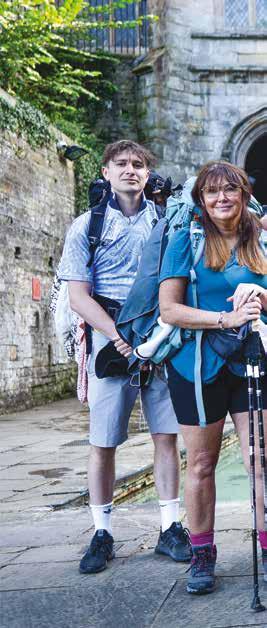
lapsed Muslim.
Journalist Sonali Shah grew up in a Jain family, actor Tom Rosenthal is areligious, and TV personality Christine McGuinness describes herself as ‘spiritual’ without adhering to a specific faith.
Starting from Flint Castle, the celebrities trek to Bardsey Island which is off the western tip of the Llyn Peninsula. Early Christian monks and hermits believed that Bardsey was the end of the world, where the space between Heaven and Earth became thin. Along the way, the celebrities learn more about the rich Celtic Christian heritage of north Wales, which dates back to the 6th century.
decisions, but I do believe that we end up on the road that we’re meant to be on.
‘Like my grandfather used to tell me: a little stream starts on a mountain, and it will come down and pass every rock and crevice that it’s got to go through. It’ll go in different directions, but it’s going to end up where it’s supposed to be. I believe life is like that.’
As we discuss Amanda’s faith – the reason for her pilgrimage – she aptly uses natural imagery to explain her perspective on life’s purpose.
‘I believe that we have a journey that we have marked out for us. We make our own
As a Christian, Amanda believes that God not only directs her life, but also enables her to have a relationship with him.
‘I do believe in prayer,’ she says. ‘I have quiet times where I feel I need to speak to him. I go to church as often as I can, but I do believe that you don’t just have to go to a place of worship.
‘If I need some answers, I’ll go for a walk and connect to whoever’s up there. I don’t know if there’s a big man sitting in a chair. But I believe that there is a big power up there, and that Jesus was his Son, who
was sent to Earth to teach us all about what’s out there.’
Amanda’s belief in God stems from her school years. It was the consoling words of a nun that helped her find faith for herself.
‘My father passed away when I was 10 and attending a Catholic school,’ she recalls. ‘I wanted him to come back so much. I remember sitting down with one of the nuns and she said: “In Heaven, we will all meet again.” From then on, that’s what I chose to believe.’
However, as her recent trek progressed, Amanda found herself dwelling on the death of her mother five years ago.
‘My childhood was a difficult one,’ Amanda tells me. ‘My mum was a functioning alcoholic, so I took on the adult role from the age of 11. But when she died, I lost my best friend. Because I always looked after her, I could not let her go.
‘I had her ashes by my bed, and my sister would say: “You’ve got to take her back to Ireland, that’s where she wanted to go.” But I wasn’t ready to let her go.’

On the pilgrimage she found a place that helped her to feel ready. The series shows the pilgrims visiting St Hwywn’s Church in Aberdaron.
Traditionally, pilgrims collect a stone from the nearby beach, write the name of a loved one on it, then add it to a prayer stone cairn – or mound – outside the church. When the celebrities enter the church with their prayer stones during the episode, the priest explains that the tradition is about letting things go – the stones would later be collected, blessed and returned to the sea.
While filming the episode, Amanda had a quiet moment on the beach outside the church.
‘I looked up to the sky, and I’m sure I saw God,’ she says. ‘But I think God was a female because I saw the most beautiful female face in the clouds. It was so unearthly. I thought: “Am I seeing things?”
‘As I had the vision, grief just lifted from me, and I said goodbye to my mum by writing on my pebble and leaving it by the church.’
Looking back on her pilgrimage experiences, Amanda tells me that she had a ‘totally different experience to the one I went in for’. And she expresses the encouragement that, when it comes to exploring faith, ‘there’s room for us all’.

SPRING has sprung as Easter returns for another year. The season’s powerful associations with new life bring hope after cold winter days. But at the heart of Easter lies a timeless story of redemption that Salisbury Cathedral wanted to retell through nature.
Jesus’ death and resurrection are central to the Christian faith so, last year, staff decided to illustrate the story by installing an Easter garden at the west end of the cathedral to be enjoyed by visitors and church attendees alike.
Every part of the installation was symbolic. The three crosses, installed on the plinth above the garden, represented how Jesus was crucified alongside two thieves. The tomb was sealed with a giant stone to recreate the Gospel accounts of

Jesus’ burial in a tomb.
Then, on Easter Sunday, Salisbury Cathedral’s team rolled away the stone to represent how, on the third day, Jesus rose from the dead and left behind an empty open grave.
The garden installation remained in place until Pentecost, a day which celebrates the moment when Jesus first gave his followers the gift of the Holy Spirit, enabling the presence of God to live within them and every Christian since.
As the Easter garden returns this year, it’s an opportunity to look back to how the idea first came about. Back in the autumn of 2022, the cathedral’s canon treasurer, the Rev Kenneth Padley, put together a team to spearhead the project.
Professional gardener Andy McIndoe – who was awarded the Veitch Memorial
Medal by the RHS in 2017 for his outstanding contribution to horticulture – was brought in to begin work on the grounds, introducing Mediterranean plants to represent the landscape in which Jesus lived.
‘He brought in plants that are authentic to the Holy Land in both sight and smell,’ recalls Kenneth. ‘Then in our works yard, Richard, who is our in-house carpenter and joiner, made three crosses by using some old and disused gnarled wood, which went up on to three plinths on the side of the building. They were the backdrop in the distance.
‘Down in the foreground was the tomb itself. Gary, our clerk of works, talked to one of the two quarries we work with, which have been producing materials for the cathedral for 800 years, so the

stones in the Easter garden match the main stone of the cathedral. He cut a big circular one, which was initially rolled across the entrance to the tomb before being rolled away.’
Comments received last year indicated that the installation appealed to secular and religious audiences alike.
There’s
Kenneth adds that the display captures both the sobering reality of Jesus’ death on a cross for our sins, traditionally marked on Good Friday, and the life-transforming truth of Jesus’ resurrection on Easter Sunday.
‘You’ve got both that sense of the austerity of the cross, but then the joy of the empty tomb as well,’ he says. ‘As the season went on, the flowers bloomed and became more beautiful to celebrate the good news.’
‘The impact of the Easter garden was universally well received,’ Kenneth says. ‘Our events manager thought it was the best thing she’d been involved in, in terms of the positive feedback.
‘Historic England do an annual review on what we offer our visitors every year. They said it was entirely appropriate and encouraging to see a floral, arty exhibit making a powerful religious statement as you go into this place of worship.’
Encouraged by the positive response, Salisbury Cathedral’s team decided to recreate a similar Easter garden format, albeit with a couple of tweaks.
‘We’ve included a bit of subtle lighting to give a glow to the tomb,’ says Kenneth, ‘and a spotlight to pick up the crosses on the wall, so that they’re more clearly part of the installation.’
With the Easter story having been told countless times down the generations, it can perhaps be easy to dismiss it as an old tale. But Christians around the world believe that the Jesus of the Bible is alive and at work in the world today. Because of this belief, Kenneth and his team want to bring in opportunities for people to encounter and interact with Jesus for themselves.
‘We’re keen that the garden is not a static thing, but that it’s part of worship,’ he says. ‘Last year, there was a prayer of
Turn to page 8 f
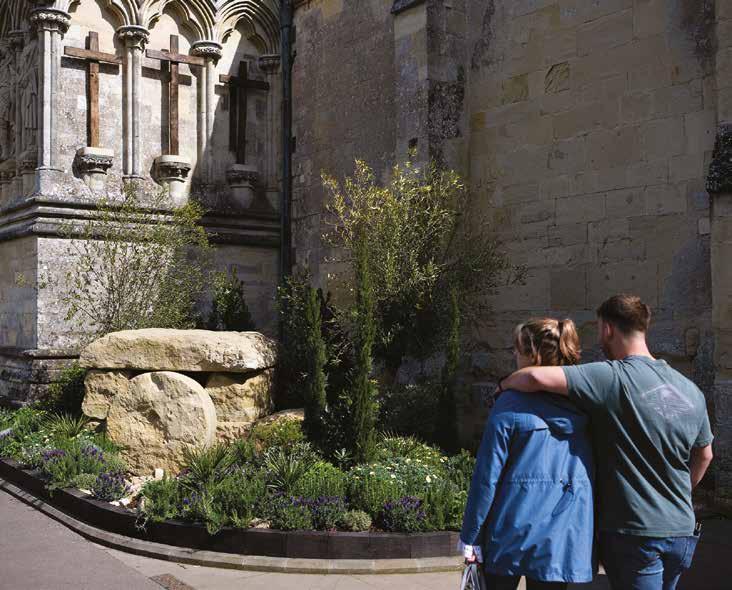
From page 7
dedication by the bishop at the start of our first Easter Day service at five o’clock in the morning. We’ll do that again.
‘This year the cathedral’s precentor, Anna, is holding an Easter carol service, which – like a Christmas carol service –involves a choir, songs which we all sing together, and readings which tell the story. The plan is to hold the service either outside or partially outside.’
‘For example, we highlight the story of Peter and Jesus on the beach at Galilee, where Peter’s mistakes in betraying Jesus are forgiven. The focus at the stopping point is on reconciliation. We deliberately do that in a public part of the Close where there’s a crossroads, so there’s a sense that you’re at a changing point.’
For those who prefer times of quiet self-reflection outside the building, Salisbury Cathedral is setting up areas for prayer and contemplation.
Kenneth explains: ‘We have seven stopping points around the Close to discover a part of the Easter story and pray about it. The journey begins with the garden and picks up on bits of the cathedral or topography that integrate with the resurrection story. Each stopping point explores a part of the story and its relevance for today.
For younger audiences, the cathedral’s education team is continuing last year’s trend of teaching schools and families about the Easter story through the garden, this time with a resurrection trail.
The Easter story forms the core message of the Christian faith.
‘God makes the world, saves the world, and rules the world,’ explains Kenneth. ‘Jesus – God’s Son – is God in human form, talking to us face to face, in a language we can understand. He shows us how much God loves and values us and – through his actions and words –can guide our life. Through Jesus’ death,
God reconciles the broken relationships we have with him and with one another.’
Kenneth believes that the visually striking Easter garden brings the reality of Jesus’ death and resurrection to life.
‘It makes it real, concrete and visible,’ he says. ‘You are confronted with a tomb, a reconstruction of what it might have looked like.’
He says that one of the strengths of the installation is that anyone can appreciate it, regardless of their religious background.
‘It’s the Easter equivalent of Christmas cribs, and a way of telling the story which is accessible to people, whatever their language. It is for all ages, whether they have experience of the Christian tradition or none. People can approach in it in different ways.
‘The accessibility and simplicity of it makes the Easter garden popular. It shows that the cross and resurrection are real, important and relevant, whoever you are – a visitor, a worshipper or simply a passer-by.’
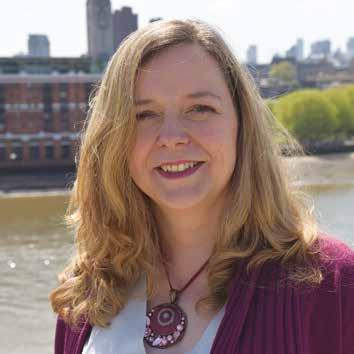 Paula Gooder
Paula Gooder

CAN a barely known man from a faraway time and place be influencing the English language today? You better believe it.
When Alfie questions whether he is really the father of the child Kat is carrying, she describes him – in a vintage episode of EastEnders now available on iPlayer – as ‘doubting Thomas’.
Football pundit Graeme Souness says that a win for Liverpool against Manchester United after a few disappointing results will shut up any ‘doubting Thomas’.
Inventor James Dyson advises school-leavers looking to the future to ‘ignore the naysayers and the doubting Thomases’.
The man who gave rise to the common phrase is a disciple who initially did not believe that Jesus had been raised from the dead.
Thomas has influenced artists, film-makers, newspaper headline writers and everyday speakers of the English language for centuries. And Bible scholar Canon Dr Paula Gooder believes we can get a sense of Thomas’s character – though she also feels that his nickname is wide of the mark.
Paula says that Thomas appears at ‘three key moments’ in John’s Gospel.
‘When Jesus decides he is going to go to Jerusalem,’ she explains, ‘the disciples try to dissuade him, because they think he’s going to die there. But Thomas says, “Let’s go with him and die with him.” It’s a passionate outburst.’ Thomas’s nature, she says, is further revealed in an exchange with Jesus once they are in Jerusalem. Only hours before his arrest and
Turn to page 10 f

From page 9
crucifixion, Jesus tells the disciples that his time with them is coming to an end but that he is going to prepare a place where eventually they too can go.
‘Thomas says: “But we don’t know where you are going.” And in response to Thomas’s outburst, Jesus says: “I am the way, the truth and the life.”
The word ‘doubt’ doesn’t appear in the original Greek text
‘There’s something about Thomas in both those passages which comes across as passionate. He’s someone who really wants to follow Jesus and do the best that he can. Which brings us on to the passages about Thomas encountering Jesus after the Resurrection.’
It is these passages that have led to Thomas becoming a byword for doubt. The disciples’ sense of foreboding that Jesus would be in danger in Jerusalem had turned out to be right. Jesus was arrested, crucified and placed in a tomb. It was not, however, the end of the story.
Paula says: ‘Jesus has risen from the dead, and appears to most of the disciples in a locked room. But Thomas isn’t there, so, later, the other disciples tell Thomas that they’d seen the risen Jesus. However, Thomas says that he won’t believe it until he can put his fingers in the holes in Jesus’ hands and in his side –essentially, he wants to see it for himself.’
A week on, Jesus appears again – and this time Thomas is with the other disciples. Jesus invites Thomas to verify that it really is him by touching the wounds left by his crucifixion.
It is here that Paula notes a detail of the story that has sometimes been bypassed.
‘When Thomas eventually does meet Jesus, there’s nothing in the story that says he did put his fingers in the holes in Jesus’ hands or side. It’s almost as if – having expressed this great wish to actually encounter Jesus and touch him –
when it comes to it, simply seeing Jesus is enough.
‘I think many works of art assume that Thomas does touch Jesus. In his painting, Caravaggio takes Thomas’s wish literally and assumes that when Jesus turns up, Thomas actually does what he said he wanted to do, even though the Gospel doesn’t tell us that this is what he did.’
In Paula’s eyes, this detail is not the only misapprehension surrounding Thomas. She believes that the word that has become attached to Thomas does not accurately reflect the story.
‘The word “doubt” doesn’t appear in the original Greek text at all. Even though,’ she adds, ‘it’s in some of our English translations of the Bible.’
When he invites Thomas to reach out and touch him, some versions translate Jesus as saying, ‘Stop doubting and believe’ or ‘Do not doubt but believe.’
Paula says: ‘The phrase “doubting Thomas” makes it sound like he’s not very clear, that he’s got to think about it a little bit before he makes his mind up.

Whereas what Jesus actually says to Thomas is: “Don’t be unbelieving, but believe.”
‘If we wanted to give Thomas a nickname, it would be better to call him “unbelieving Thomas” rather than “doubting Thomas”.
‘However, I would prefer to call him “believing Thomas”, because – when you consider him in the light of those two earlier accounts, where he was ready to die with Jesus and where he wants to understand where Jesus is going – he comes across as this really passionate person of faith who wants to have everything available to him so that he can believe properly.
‘I feel he gets a bit of a bad press, as if he should have believed the other disciples,’ says Paula. ‘But no one had risen from the dead. So it’s a bit of a big ask for Thomas suddenly to believe it.
‘Yes, we need to be believing. And Jesus tells Thomas: “Blessed are those who do not see and yet believe.” But Jesus doesn’t chastise him. He just says: “Don’t be unbelieving.”’
Paula reads Jesus’ words not as a telling-off, but an invitation.
to believe without seeing. Instead, he recognised that Thomas needed to see him raised, so he turned up.
‘I think people who struggle with faith can know that they’re not told off for doubting or not believing, but can be reassured that Jesus understands the complexity of believing and will show us things when we need them.’
What Thomas came to believe is – as Paula describes it – ‘the very kernel of what we believe as Christians’.
‘And it’s worth saying that, having met the risen Jesus, he says: “My Lord and my God” – he is the only disciple who names Jesus as God.’
The image of a ‘doubting Thomas’ may suggest that the original disciple is looked on less than favourably.
‘I get the feeling that Jesus understands that Thomas finds it really hard, and he finds it really hard because he’s such a passionate person. Of course, it’s better if we can believe the truth without having encountered it in evidential form, but there is the reassurance that Jesus understands how difficult it is.
‘Jesus could have decided that he was not going to turn up and that Thomas had
She says: ‘Over and over again in the New Testament, we find the phrase “the God who raised Jesus from the dead will…” and the writer then describes something about what God is going to do.
‘The New Testament writers believed that a fundamental part of God’s nature was God’s ability to raise Jesus from the dead.
‘Jesus’ resurrection is the glimpse we have of who God is. If God can raise Jesus from the dead, then he can bring new life when there is death and hope where there is despair.
‘And that is the sum of my faith.’
THE War Cry invites readers to send in requests for prayer, including the first names of individuals and details of their circumstances, for publication. Send your Prayerlink requests to warcry@salvationarmy.org.uk or to War Cry, 1 Champion Park, London SE5 8FJ. Mark your correspondence ‘Confidential’.
jThere is no set formula to becoming a Christian, but many people have found saying this prayer to be a helpful first step to a relationship with God Becoming a Christian
Lord Jesus Christ, I am truly sorry for the things I have done wrong in my life. Please forgive me. I now turn from everything that I know is wrong.
Thank you that you died on the cross for me so that I could be forgiven and set free.
Thank you that you offer me forgiveness and the gift of your Holy Spirit. Please come into my life by your Holy Spirit to be with me for ever.
Thank you, Lord Jesus.
Amen


NOTHING good lasts for ever. It’s not the most uplifting of sayings, but it warns whoever hears it that, while they may be enjoying the good things of life right now, they should expect them to go wrong at some point.
The people who learnt this prayer from Jesus certainly experienced sorrows and disappointment. And many of them accompanied him on his journey as he taught people about God and his love.
Then, when the authorities put Jesus to death, his body was laid to rest in a tomb. All the good things his followers had been experiencing while with him had come to an end.
But when some of them went to the tomb, they discovered that Jesus’ body was gone. Shortly afterwards, Jesus appeared to them. He was alive, and he promised that he and his Father, God, would be with them – and us – for ever. This promise is highlighted in the final words of the Lord’s Prayer.
One way in which we can know God’s presence in our lives is through prayer. It is why Jesus wanted to teach his followers how to pray.
Our Father, which art in Heaven, Hallowed be thy name, Thy Kingdom come, Thy will be done, in earth as it is in Heaven.
Give us this day our daily bread; And forgive us our trespasses, As we forgive them that trespass against us; And lead us not into temptation, But deliver us from evil.
For thine is the Kingdom, the power, and the glory, For ever and ever.
Amen
In the Lord’s Prayer, Jesus showed that God wants us to speak to him as a loved family member. He also revealed that God wants to forgive us for the things we do wrong and to help us with every aspect of our lives.

Throughout history, millions of people have discovered the benefits of speaking to God through prayer. It didn’t mean they never faced any challenges again, but it did enable them to face those challenges and to live a life full of purpose, love and fulfilment – a life which continued after their own time on Earth had come to end.
And the best news is that, with Jesus, we too can have a life that will last for ever and ever.


What is the name of the tower block that Del Boy lives in on the comedy TV show Only Fools and Horses?
Who stars as Harold Fry’s wife, Maureen, in the film The Unlikely Pilgrimage of Harold Fry?
In what year was the online encyclopaedia website Wikipedia created?
How many kilometres is 10 miles, to the nearest kilometre?
Which rock band had a hit in 1998 with their song ‘I Don’t Want to Miss a Thing’?
How many bells are contained in The Elizabeth Tower in Westminster?
Moses gives the Hebrews God’s instructions for living
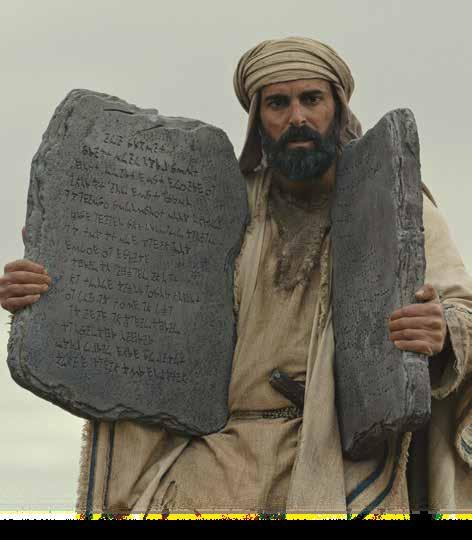
MOSES seemed destined to live a life of adventure. Born in Egypt at a time when all Hebrew baby boys were to be killed – by order of the Pharaoh, one of the most powerful men in the ancient world – his life is spared when his mother places him in a basket on the riverbank. New Netflix docudrama Testament: The Story of Moses, available to watch now, retells the Bible story of how that baby went on to save a whole nation.
The three-part series follows the life of Moses (Avi Azulay) after he was found on the bank of the River Nile by the Pharaoh’s daughter (Tülay Günal Göncü). He is raised as an Egyptian, enjoying the wealth of the palace, while the Hebrews work as slaves. One day, however, he sees an Egyptian beating a Hebrew and kills him. He is found out and, with his life under threat again, he flees to the desert, where he finds a new community and starts a family.
But the story does not end there. Moses is called by God to return to Egypt and demand that Pharaoh (Mehmet Kurtuluş) lets the Hebrew people go free. The Hebrews are granted their freedom, and Moses leads them out of Egypt. Later he instructs them to follow God’s laws for living.
The Netflix docudrama shows the story of Moses’ birth until his death, interweaving dramatic scenes from the biblical narrative with expert interviews, featuring scholars and religious leaders who have studied writings about Moses and give greater insight into his character.
While Moses did amazing things with God’s power, he wasn’t a perfect man. He struggled with doubt and anger. He had committed murder. But, says one of the docudrama’s contributors Pastor Tony Kang: ‘The God of Scripture is a God who specialises in taking broken things and not just fixing them, but repurposing them for something even greater.’
In spite of our past, or even the things we struggle with in the present, if we commit to journeying with God, we can experience freedom in our lives today.
ACROSS
1. Hobble (4)
3. Spigot (3)
5. Collision (4)
7. Wedlock (9)
9. Observed (4)
10. Expensive (4)
11. Stage (5)
14. More sagacious (5)
15. Arrangement (3-2)
17. Corrosives (5)
18. Goat (5)
19. Accede (5)
20. Piquant (5)
23. Cook (4)
25. Gone (4)
27. Systematically (9)
28. Ogle (4)
29. Mate (3)
30. Elderly (4)
DOWN
1. Optical glass (4)
2. Design (4)
3. Roost (5)
4. Pastimes (5)
5. Fasten (4)
6. Hard up (4)
7. Harbinger (9)
8. Day before (9)


1.
2.
3.
4.
5.

11. Implores (5)
12. Plea of being elsewhere (5)
13. Attempt (5)
14. Pale (3)
16. Pastry dish (3)

21. Chubby (5)
22. Creep (5)
23. Calm (4)
24. Dread (4)
25. Entreaty (4)
26. Informed (4)
Look up, down, forwards, backwards and diagonally on the grid to find these words associated with Easter


INGREDIENTS
4tbsp caster sugar
Preheat the oven to 200C/Gas Mark 6.
5 medium British Lion eggs
1 lemon, zest and juice
4tbsp lemon curd
150ml single cream, plus extra to serve
200ml milk
4 hot cross buns, sliced vertically 2tsp demerara sugar
SERVES 2


To make the custard, beat the caster sugar, eggs, lemon zest and curd together in a large jug until smooth. Add the single cream and milk, then mix well.



For the pudding, place all the end pieces of the hot cross buns over the base of a 1.2l shallow ovenproof dish. Neatly arrange the other slices on top, then drizzle over the lemon juice. Pour over the custard, then use a fork to lightly press the bun slices so that they soak up the custard. Leave to stand for 5 minutes.
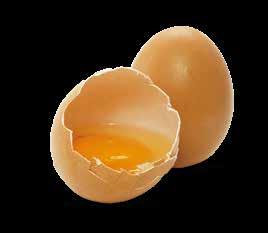
Place the dish in a roasting tin, then pour boiling water from a kettle around the dish until it reaches halfway up the side. Scatter the demerara sugar over the top of the pudding.
Bake for 25 minutes or until the pudding is set with a slight wobble and the top is golden.
Remove from the roasting tin and serve warm with extra cream poured over the top.
INGREDIENTS
2 medium British Lion eggs
3tbsp milk
4tsp caster sugar
Pinch of cinnamon
2 hot cross buns
225g mixed strawberries, raspberries and blueberries
Vegetable oil
In a wide, shallow bowl, beat together the eggs, milk, 2tsp sugar and cinnamon. Use a bread knife to slice each hot cross bun into 3 parts horizontally. Place the buns in the egg mixture and leave to soak for 5 minutes, turning occasionally until all the egg has been soaked up.
To make a compote, cut the strawberries into halves or quarters and place them in a small pan with the raspberries and blueberries. Add the remaining 2tsp sugar and mix well. Place over a gentle heat and slowly bring to the boil. Simmer for 2 minutes, before spooning into a serving bowl. Leave to cool.

Heat a medium non-stick pan, then add a couple drops of oil and swirl round the pan. Cook the hot cross buns in the pan for 2 minutes, until the bases are golden. Turn over with a spatula and repeat until both sides are golden and crisp.
Place the 3 slices of the hot cross buns on each plate and spoon over the warm compote before serving.
